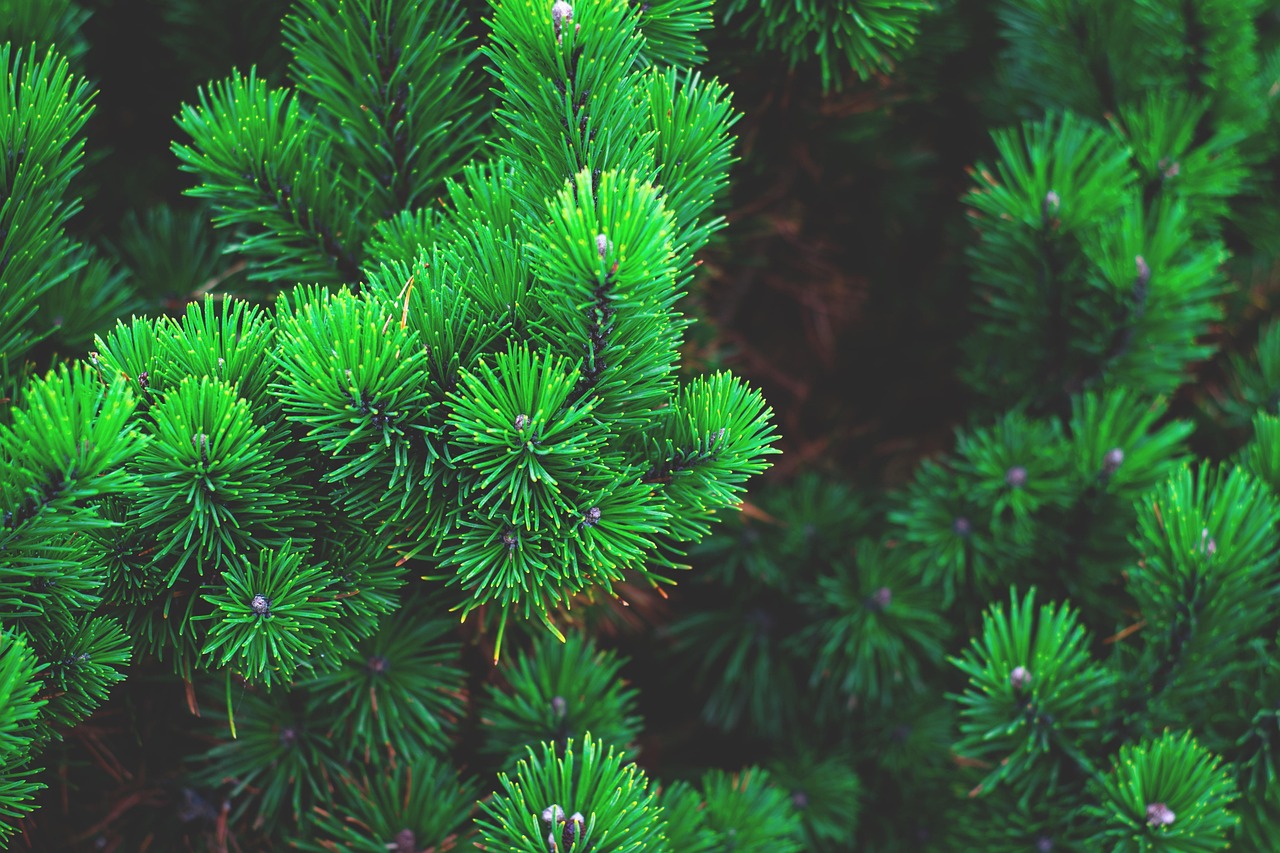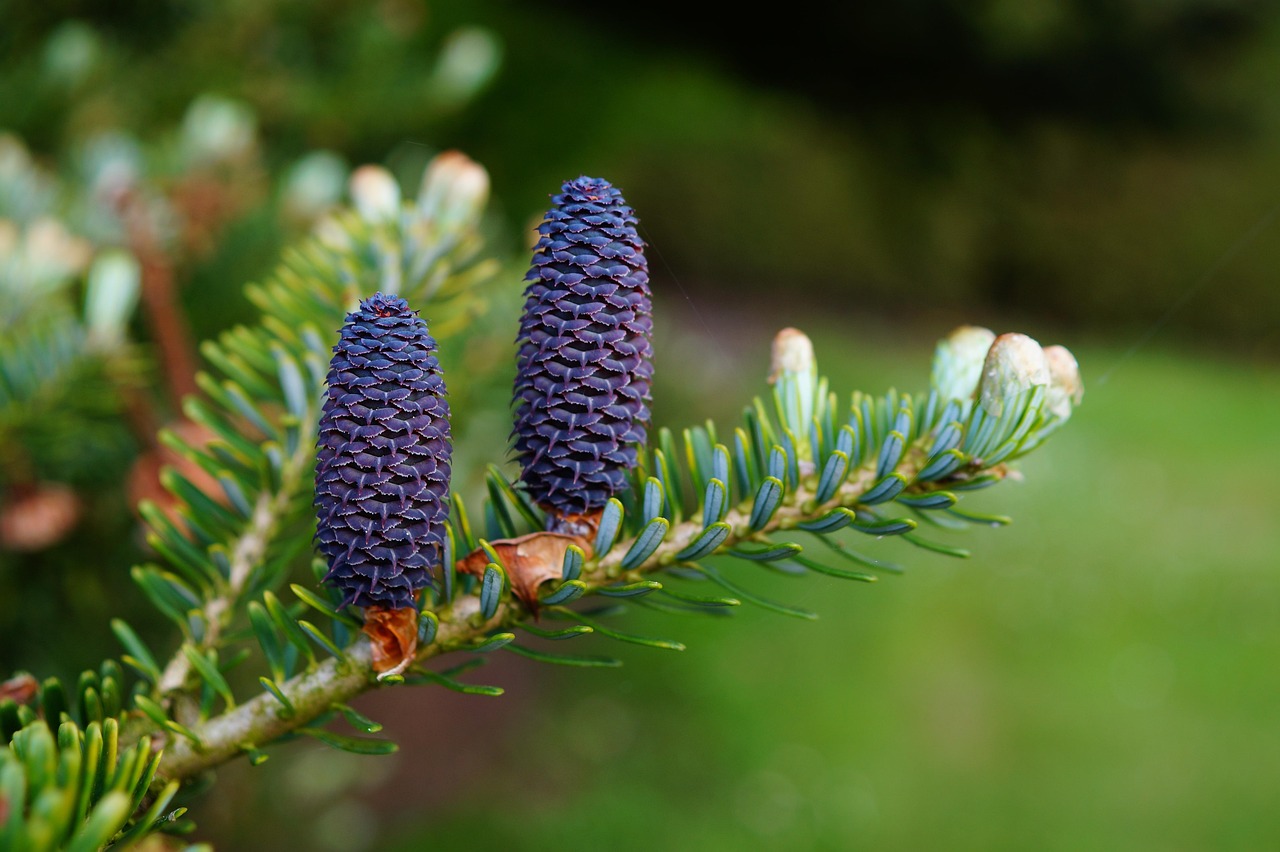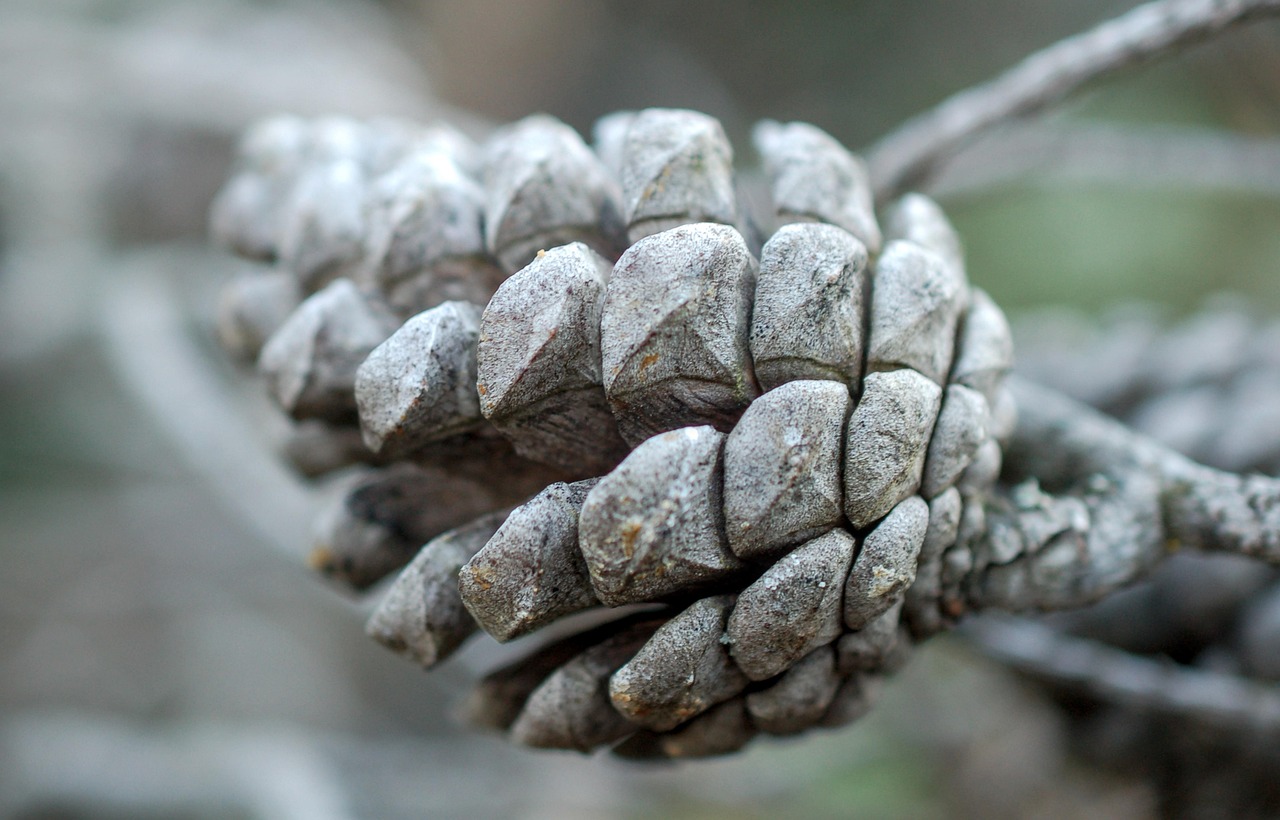Pine tree pruning is essential to reduce fire hazards. By removing dead or overgrown branches, you can decrease the amount of combustible material. Proper pruning creates a safer environment, especially in areas prone to wildfires.
Pine trees are popular for their beauty and shade. However, they can also pose significant fire hazards, especially in dry conditions. Their needles and resin-rich wood are highly flammable. When these trees are not properly maintained, they can easily become a source of fuel for wildfires. Therefore, understanding the importance of pruning is crucial for homeowners and landowners alike.

Pruning helps maintain the health of pine trees while also enhancing safety. Proper pruning techniques reduce the density of branches, allowing for better air circulation. This not only promotes healthier growth but also minimizes the accumulation of dry, dead material that can ignite easily. Additionally, regular maintenance reduces the chances of pest infestations that can weaken trees and make them more susceptible to fire.
Understanding Fire Hazards with Pine Trees
Fire hazards related to pine trees often stem from two main factors: the tree’s natural characteristics and environmental conditions. Understanding these factors can help in effective management and pruning practices.
| Factor | Description |
|---|---|
| Flammability | Pine needles and resin are highly flammable, increasing fire risk. |
| Growth Density | Dense growth can trap heat and promote fire spread. |
| Environmental Conditions | Dry weather and strong winds can exacerbate fire hazards. |
| Dead Material | Accumulation of dead branches and needles provides fuel for fires. |
In addition to understanding the inherent risks, it is essential to recognize the role that surrounding landscapes play in fire safety. Areas with dense vegetation or close proximity to structures require more diligent maintenance. Homeowners should be aware of their local fire regulations and guidelines as well.

To effectively manage pine trees and reduce fire hazards, consider implementing a regular pruning schedule. The timing of pruning is crucial; late winter or early spring is usually the best time to prune pine trees. During this period, the trees are still dormant, which minimizes stress and promotes healthy regrowth in the coming season.
Key Pruning Techniques for Pine Trees
When pruning pine trees, it is important to follow specific techniques to ensure effectiveness. Here are some key methods:
- Remove Dead or Diseased Branches: Always start by cutting away any dead or diseased limbs. This helps prevent the spread of disease and reduces fire fuel.
- Thin Out Crowded Branches: Cutting back branches that are too close together improves air circulation and light penetration.
- Avoid Topping: Topping can harm the tree’s structure and health. Instead, prune selectively to maintain a natural shape.
- Maintain Height: Keep tree height manageable to reduce overhanging branches near structures.
- Use Proper Tools: Always use clean, sharp tools for pruning to make clean cuts and prevent damage to the tree.
Implementing these techniques not only improves the appearance of your pine trees but also contributes significantly to fire safety. By systematically removing potential fuel sources, you create a buffer against wildfires.

It is also beneficial to consider the distance between pine trees and structures. Creating defensible space around your home or building is vital in reducing fire risk. The National Fire Protection Association (NFPA) recommends maintaining a minimum distance of 30 feet between trees and structures. This spacing reduces the likelihood of fire spreading directly to buildings.
Monitoring and Maintenance
Regular monitoring of pine trees is essential for early detection of issues that could lead to increased fire hazards. Look for signs of disease or pest infestations, as these can weaken trees and make them more susceptible to fires. Additionally, fallen branches and accumulating needles should be cleared periodically to reduce fire fuel.
Engaging a professional arborist can also be beneficial for those unsure about proper pruning techniques or who have large trees. Professionals have the expertise needed to assess tree health and make recommendations based on local conditions. They can provide insight into the best practices tailored to specific landscapes.

Pine tree pruning is not just a matter of aesthetics; it is a critical component of fire safety management. By prioritizing regular maintenance and understanding the unique risks associated with these trees, homeowners can create a safer environment for themselves and their communities.
Understanding the Role of Vegetation Management
Effective vegetation management plays a significant role in reducing fire hazards associated with pine trees. This management goes beyond just pruning. It encompasses various practices that ensure the surrounding environment is also conducive to fire prevention. By understanding how to manage both trees and their surrounding areas, homeowners can significantly reduce fire risks.
Creating Defensible Space
Defensible space refers to the area around a home or building where flammable vegetation and materials have been reduced or removed. Establishing a defensible space is crucial in preventing the spread of wildfires. Here are key recommendations for creating a defensible space:
- Zone 1: Immediate Area (0-5 feet from structures): This zone should be free of any flammable materials. Use non-flammable landscaping materials such as gravel or stone. Avoid using mulch or wood chips in this area.
- Zone 2: Intermediate Area (5-30 feet from structures): In this zone, maintain a distance of at least 10 feet between tree branches and structures. Prune trees to a height of at least 6-10 feet off the ground. Remove any dead or dying vegetation.
- Zone 3: Extended Area (30-100 feet from structures): Thin out trees and shrubs to create space between them. This helps slow the spread of fire by reducing fuel density.
Maintaining these zones not only protects structures but also contributes to overall forest health. It ensures that there is a reduced risk of fire spreading from one area to another.
Choosing Fire-Resistant Plants
Selecting fire-resistant plants for landscaping can also help minimize fire hazards. These plants are less likely to ignite and can serve as a barrier against flames. Consider incorporating the following types of plants into your landscape:
- Succulents: These plants retain moisture and are less likely to catch fire.
- Herbs: Many herbs, such as rosemary and lavender, are fire-resistant due to their high moisture content.
- Native Plants: Local flora is often adapted to the environment and can thrive with less water and maintenance, making them ideal choices.
- Ground Covers: Low-growing plants can prevent weed growth and reduce the amount of dry material available for ignition.
Seasonal Maintenance Practices
Seasonal maintenance is vital for ensuring that pine trees and surrounding vegetation remain healthy and fire-resistant. Each season presents different tasks that homeowners should address to maintain their landscapes effectively.
Spring Maintenance
In spring, after the last frost, focus on inspections and initial pruning:
- Inspect trees for any signs of disease or pest infestations.
- Begin pruning dead or overcrowded branches to promote healthy growth.
- Clear away any debris, such as fallen branches or leaves, which can accumulate moisture and promote decay.
- If applicable, apply mulch around healthy plant bases but avoid using it close to structures.
Summer Maintenance
Summer is a critical time for monitoring tree health and maintaining defensible space:
- Check for dry foliage or branches that may pose a fire risk.
- Water plants regularly to keep them hydrated and reduce flammability.
- Continue clearing any accumulated debris from the landscape.
- Inspect irrigation systems to ensure they are functioning properly, especially in dry areas.
Fall Maintenance
As leaves begin to fall, focus on cleanup and preparation for winter:
- Rake up fallen leaves and pine needles promptly to prevent them from accumulating on the ground.
- Consider doing a final pruning of trees before winter sets in. This will allow for better air circulation during the cold months.
- If necessary, assess tree stability, especially after summer storms.
winter Maintenance
During winter, the focus shifts towards preparation for the upcoming growing season:
- Inspect trees for any structural issues that may have arisen during winter storms.
- Plan for spring pruning by mapping out which branches need to be cut back.
- Monitor tree health and look for signs of pests that may be dormant during the cold months.
The Importance of Education and Community Involvement
Education about fire hazards related to pine trees is essential for community safety. Communities can benefit from local workshops or programs focused on fire prevention strategies. Residents should be encouraged to participate in local fire safety initiatives, which may include:
- Community Clean-Up Events: Organizing events to clear debris and maintain landscapes can foster community engagement while promoting safety.
- Workshops on Pruning Techniques: These workshops can educate homeowners on proper pruning methods and maintenance practices specific to their region.
- Collaborative Vegetation Management Programs: Working together with local fire departments and forestry services can help residents understand effective vegetation management strategies.
By fostering a culture of education and community involvement, neighborhoods can become more resilient against potential fire hazards. Regular collaboration among residents enhances awareness and encourages proactive measures to protect homes and landscapes from wildfires.
Tools and Techniques for Effective Pruning
Utilizing the right tools and techniques is vital for effective pine tree pruning. Proper equipment ensures that cuts are clean, minimizing damage to the tree and reducing the risk of disease. Here, we will discuss essential tools for pruning and the techniques that enhance safety and tree health.
Essential Pruning Tools
There are several tools that homeowners should consider having on hand for pruning pine trees:
- Hand Pruners: Ideal for small branches up to ¾ inch in diameter, hand pruners are easy to use and essential for precise cuts.
- Loppers: These are used for larger branches, typically between ¾ inch and 2 inches in diameter. Loppers provide better leverage for cutting hard-to-reach branches.
- Pruning Saw: For branches larger than 2 inches, a pruning saw is effective. It allows for larger cuts and can reach higher branches.
- Pole Saw: This tool is necessary for high branches that cannot be reached safely from the ground. A pole saw extends your reach without the need for a ladder.
- Safety Gear: Always wear safety goggles, gloves, and a hard hat while pruning to protect yourself from falling debris.
Pruning Techniques to Follow
Employing the right pruning techniques is crucial to maintaining the health of pine trees while minimizing fire hazards. Here are some effective methods:
- Thinning: This technique involves selectively removing branches to reduce density without altering the tree’s overall shape. Thinning improves air circulation and sunlight penetration.
- Heading Cuts: Use heading cuts to trim back the growth of branches to a lateral bud. This encourages bushier growth while maintaining the tree’s structure.
- Reduction Cuts: Rather than topping a tree, which can lead to health issues, use reduction cuts to shorten branches while preserving their natural form.
- Cleaning: Regularly remove dead, diseased, or damaged branches to prevent the spread of pests and diseases that can contribute to fire hazards.
Recognizing Signs of Tree Stress and Disease
A healthy tree is less likely to become a fire hazard. Understanding the signs of stress or disease can help homeowners take action before problems escalate. Here are some common indicators:
Signs of Stress
- Poor Growth: Trees that are not growing as expected may be stressed due to insufficient water, poor soil conditions, or competition from nearby plants.
- Discoloration: Yellowing needles or leaves may indicate nutrient deficiencies or watering issues.
- Bark Damage: Cracked, peeling, or missing bark can signify physical injury or disease.
Common Diseases Affecting Pine Trees
Pine trees can be susceptible to various diseases that weaken their structure and increase fire risk. Awareness of these diseases is important for timely intervention:
- Pine Wilt Disease: Caused by a nematode, this disease leads to rapid needle loss and tree death.
- Dothistroma Needle Blight: This fungal disease causes needles to turn yellow and eventually fall off, weakening the tree significantly.
- Pine Bark Beetle Infestation: These beetles bore into the bark, disrupting nutrient flow and potentially killing the tree if not managed properly.
The Importance of Timing in Pruning
The timing of pruning significantly affects the overall health of pine trees and helps minimize potential fire hazards. Understanding when to prune can prevent unnecessary stress on the tree.
Best Times for Pruning Pine Trees
The optimal time for pruning pine trees typically falls into two main seasons:
- Late Winter to Early Spring: Pruning during this period allows trees to heal quickly as they enter their growing season. It is also easier to see the tree’s structure without foliage.
- After Seed Drop: For certain pine species that produce cones, pruning can occur after cones have released seeds, which often happens in late summer to early fall. This timing ensures minimal disruption to the tree’s reproduction cycle.
Avoiding Pruning During High-Stress Periods
Avoid pruning during periods of extreme heat or drought. Such conditions can stress trees further and hinder recovery from pruning cuts. Similarly, late summer or fall pruning is generally discouraged as it can promote new growth that may not have time to harden before winter.
Professional Assistance: When to Call an Arborist
While many homeowners can manage basic pruning tasks, there are situations where hiring a professional arborist is advisable. Here are some circumstances when professional help may be necessary:
- Larger Trees: If pine trees are too large or tall for safe access, an arborist has the training and equipment necessary for safe pruning.
- Sick Trees: If you suspect disease or pest infestation, a professional can diagnose the issue accurately and recommend appropriate treatments.
- Complex Pruning Needs: Trees that require specialized techniques may benefit from an expert’s knowledge to ensure correct methods are applied.
Professional arborists can also provide valuable insights into long-term tree care strategies that align with fire prevention efforts. By choosing the right professionals, homeowners can ensure their pine trees remain healthy and safe from fire hazards.
The Role of Local Regulations and Guidelines
Understanding local regulations regarding tree pruning and fire safety is crucial for homeowners. Many areas, especially those prone to wildfires, have specific guidelines that dictate how vegetation should be managed. Familiarizing yourself with these regulations can not only ensure compliance but also enhance community safety.
Local Fire Codes
Many municipalities have established fire codes that outline mandatory practices for landscaping in fire-prone areas. These codes may include:
- Defensible Space Requirements: Specific distances that must be maintained between trees, shrubs, and structures.
- Vegetation Management Guidelines: Recommendations on what types of plants are suitable for landscaping in high-risk areas.
- Pruning Standards: Requirements for how and when trees should be pruned to minimize fire risks.
Homeowners are encouraged to consult local fire departments or municipal websites to obtain information on these regulations. By adhering to local guidelines, residents can contribute to a safer environment for themselves and their neighbors.
Community Resources for Fire Safety
In addition to local regulations, many communities offer resources to help residents manage fire hazards associated with pine trees. These resources may include:
- Fire Safety Workshops: Community organizations often host workshops focusing on fire prevention techniques, including proper pruning methods and landscaping practices.
- Free Consultation Services: Some local governments provide free consultations with certified arborists or horticulturists who can guide homeowners on effective tree care.
- Firewise Programs: These initiatives educate homeowners on creating defensible spaces and managing vegetation to reduce fire risks.
Engaging with these community resources can significantly enhance a homeowner’s ability to manage their landscape effectively while contributing to overall fire safety efforts in the area.
Technology and Innovations in Tree Care
Advancements in technology have also contributed to improved tree care practices. Tools and resources are now available that can help homeowners monitor and maintain the health of their pine trees more effectively:
Monitoring Tools
- Soil Moisture Sensors: These devices can help determine when trees require watering, ensuring they remain healthy without overwatering.
- Drones: Some professionals use drones to assess large areas of vegetation, identifying potential problem areas that may require attention.
- Mobile Apps: Various apps provide guidance on tree health and maintenance, allowing homeowners to track pruning schedules or identify diseases.
Embracing these technological advancements can enhance the efficiency of tree management practices, leading to healthier trees and reduced fire risks.
Final Thoughts
Pine tree pruning is an essential practice for maintaining the health of your trees while minimizing potential fire hazards. Through regular monitoring, proper techniques, and community engagement, homeowners can significantly reduce the risk of wildfires. Understanding local regulations and utilizing available resources can further empower residents to take proactive measures in fire prevention.
The importance of creating defensible space around homes cannot be overstated. By carefully selecting plant species, maintaining healthy landscapes, and adhering to proven pruning practices, communities can work together to mitigate fire risks effectively. Engaging professionals when necessary ensures that homeowners receive the best possible care for their trees, fostering a safer environment for all.
As wildfires become an increasing concern in many regions, prioritizing tree care and community involvement is more critical than ever. By taking these steps, homeowners can protect their properties while contributing to the broader goal of fire safety in their neighborhoods. Together, we can cultivate landscapes that are not only beautiful but also resilient against the threat of wildfires.
